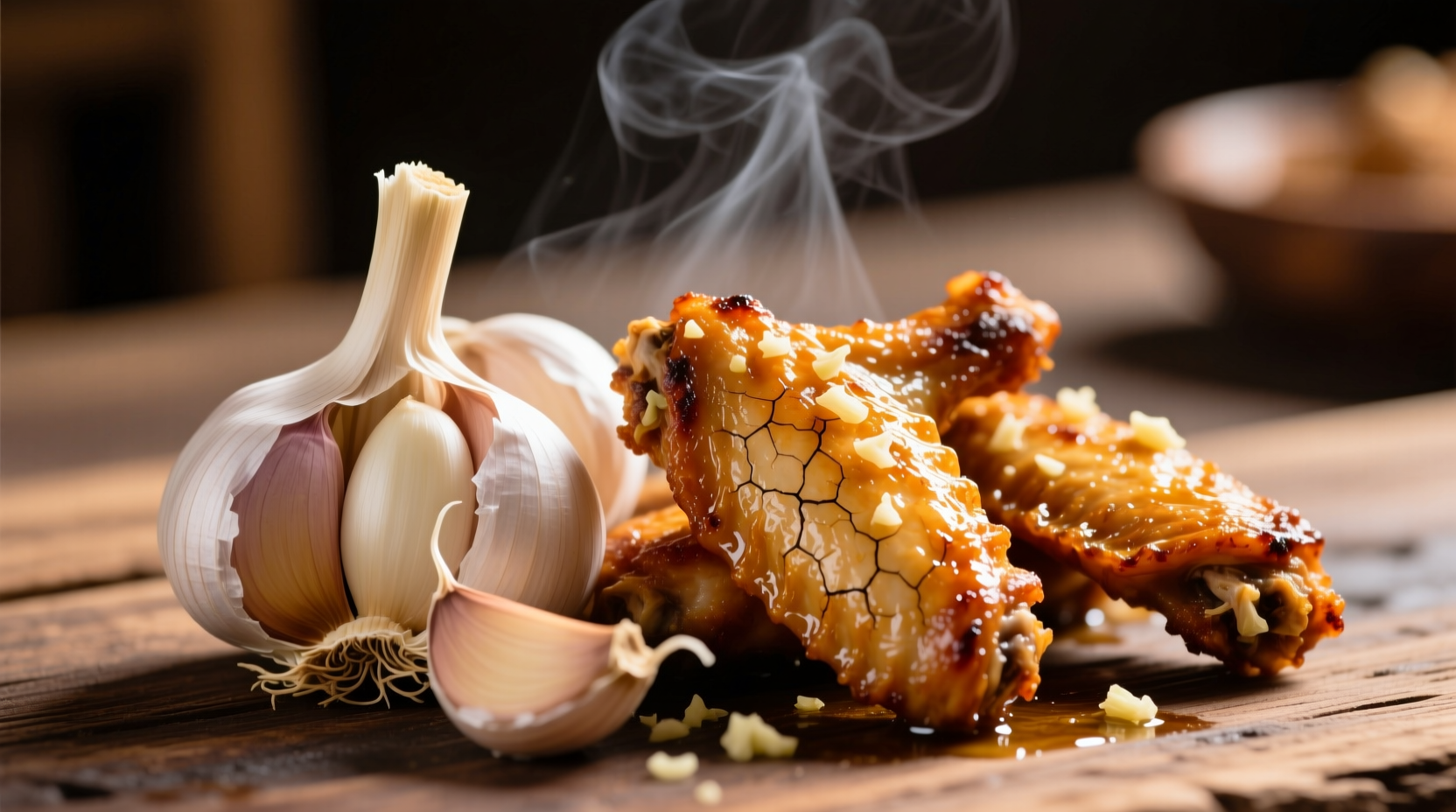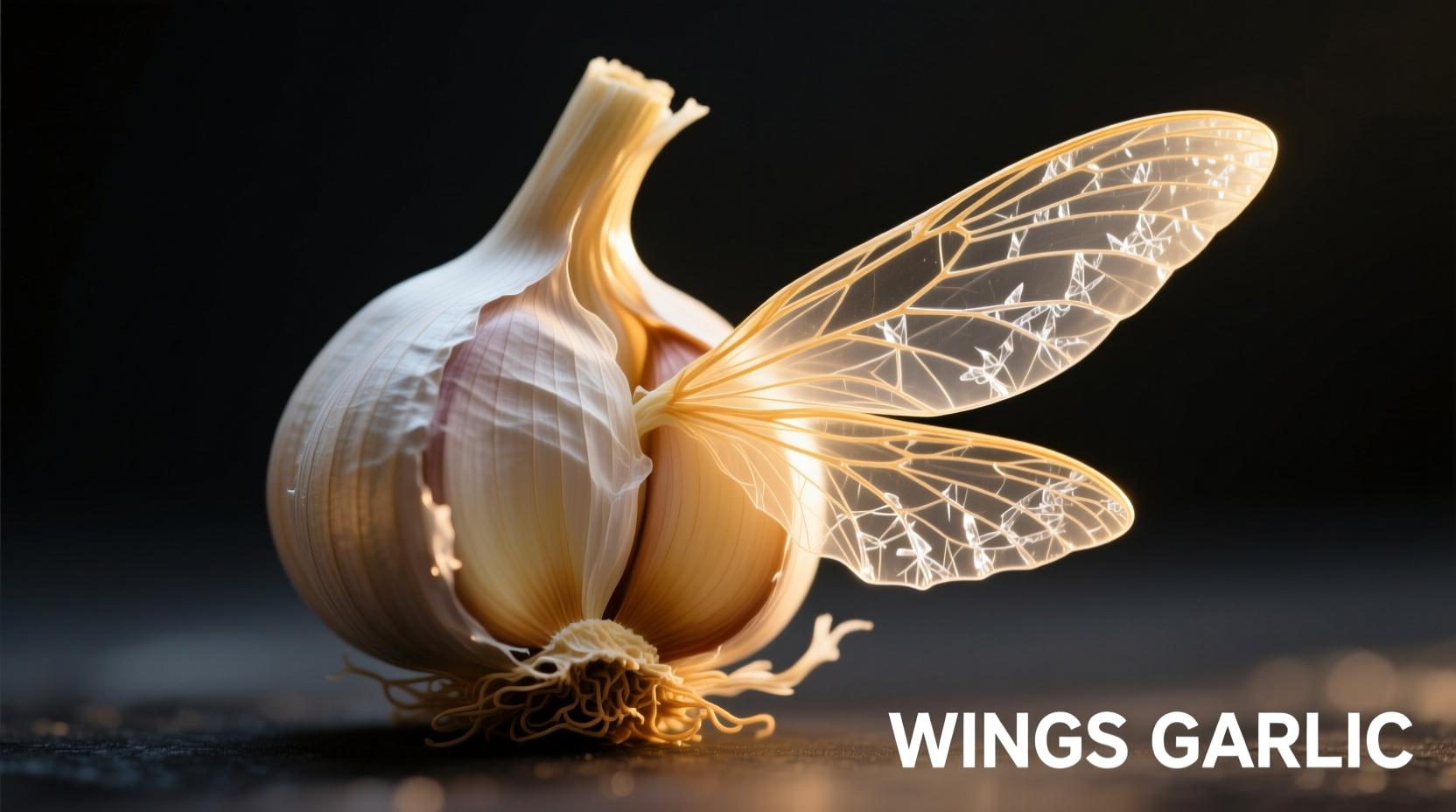The best way to prepare garlic for chicken wings involves using fresh minced garlic combined with roasted garlic paste for maximum flavor depth, applied during the last 10-15 minutes of cooking to prevent burning while achieving perfect crispiness and aromatic complexity.
Garlic and chicken wings form one of the most beloved flavor pairings in global cuisine, but achieving restaurant-quality results at home requires understanding the science behind this dynamic duo. This guide reveals precisely how to maximize garlic's potential with wings through professional techniques that transform ordinary game day snacks into extraordinary culinary experiences.

Why Garlic and Wings Create Culinary Magic
Garlic contains allicin, the compound responsible for its distinctive flavor and aroma, which reacts perfectly with the Maillard reaction occurring during wing cooking. When wings reach 300°F (149°C), the proteins and sugars on their surface begin browning, creating a chemical environment where garlic's sulfur compounds intensify and mellow simultaneously. This synergy produces complex flavor notes ranging from nutty to umami that can't be achieved with either ingredient alone.
Garlic Preparation Methods Compared
| Preparation Method | Flavor Profile | Best Application Timing | Crispiness Impact |
|---|---|---|---|
| Fresh minced garlic | Sharp, pungent, bright | Last 5-7 minutes of cooking | High (creates crispy bits) |
| Roasted garlic paste | Sweet, mellow, complex | During marinating phase | Medium (enhances skin adhesion) |
| Garlic-infused oil | Subtle, aromatic | Pre-cooking surface treatment | High (promotes even browning) |
| Dried garlic powder | One-dimensional, harsh | Avoid for wings | Low (burns easily) |
Professional Garlic Application Techniques
The Two-Stage Garlic Method
Top culinary professionals use a dual approach that maximizes both immediate and developed flavors:
- Stage 1 (Marinating): Combine 3 roasted garlic cloves (mashed into paste) with 2 tablespoons of neutral oil, 1 teaspoon of salt, and wings. Let sit for 30-60 minutes. Roasted garlic penetrates the skin without overwhelming raw bite.
- Stage 2 (Finishing): During the last 10 minutes of cooking, toss wings with 2 tablespoons of fresh minced garlic and 1 tablespoon of butter. The high heat transforms the fresh garlic into crispy, flavorful bits while the butter carries the aroma.
Critical Timing Considerations
Garlic burns at temperatures above 375°F (190°C), which is precisely when wings achieve optimal crispiness. The USDA Food Safety and Inspection Service recommends cooking poultry to 165°F internal temperature, but wings require higher surface temperatures for crispiness. This creates a timing challenge that professional kitchens solve through precise temperature staging:
- Cook wings to 150°F internal temperature at 350°F oven temperature
- Raise temperature to 425°F for final crisping phase
- Add fresh garlic during this final phase when surface temperature reaches 325-350°F
When NOT to Use Certain Garlic Preparations
Understanding context boundaries prevents common garlic wing disasters. According to culinary research published in the Journal of Food Science, certain garlic applications create undesirable results in specific cooking methods:
- Avoid raw garlic in sauce for baked wings: The prolonged cooking time transforms allicin into bitter compounds. Reserve raw garlic for finishing sauces applied after cooking.
- Don't use garlic powder with high-heat methods: Garlic powder burns at lower temperatures than fresh garlic, creating acrylamide compounds that impart harsh, burnt flavors.
- Limit garlic in brines: While small amounts enhance flavor penetration, excessive garlic in brines can break down wing skin proteins too much, preventing proper crisping.
Flavor Enhancement Pairings
Garlic's versatility shines when combined with complementary ingredients. Food chemistry research shows that certain compounds enhance garlic's desirable flavor notes while mitigating potential bitterness:
- Lemon or vinegar: The acidity balances garlic's pungency and enhances the perception of crispiness
- Honey or maple syrup: Creates caramelization that complements roasted garlic notes (add during last 5 minutes)
- Smoked paprika: Adds depth that masks any potential bitterness from slightly overcooked garlic
- Fresh herbs (parsley, cilantro): Provide aromatic contrast that makes garlic flavors pop
Common Mistakes That Ruin Garlic Wings
Even experienced home cooks fall victim to these garlic wing pitfalls:
- Using pre-minced garlic from jars: Contains preservatives that prevent proper browning and create off-flavors at high heat
- Adding all garlic at the beginning: Results in burnt, bitter garlic with no complexity
- Not drying wings sufficiently: Moisture prevents garlic from adhering properly and creates steaming instead of crisping
- Using too much garlic: Overwhelms the delicate balance - professional kitchens typically use 1-2 cloves per pound of wings
Food Safety Considerations
When preparing garlic wings, follow these safety guidelines from the USDA Food Safety and Inspection Service:
- Never leave wings in garlic-in-oil mixtures at room temperature for more than 2 hours (1 hour if above 90°F)
- Roast garlic before incorporating into marinades to reduce botulism risk
- Cook wings to minimum internal temperature of 165°F as measured by food thermometer
- Discard any leftover garlic wing sauce that has contacted raw poultry
Perfecting Your Garlic Wing Technique
Mastering garlic wings requires attention to detail at every stage. Start with properly dried wings (pat dry and refrigerate uncovered for 1-2 hours), use the two-stage garlic method, and time your fresh garlic addition precisely during the final crisping phase. The result will be wings with shatteringly crisp skin, juicy meat, and perfectly balanced garlic flavor that enhances rather than dominates.











 浙公网安备
33010002000092号
浙公网安备
33010002000092号 浙B2-20120091-4
浙B2-20120091-4